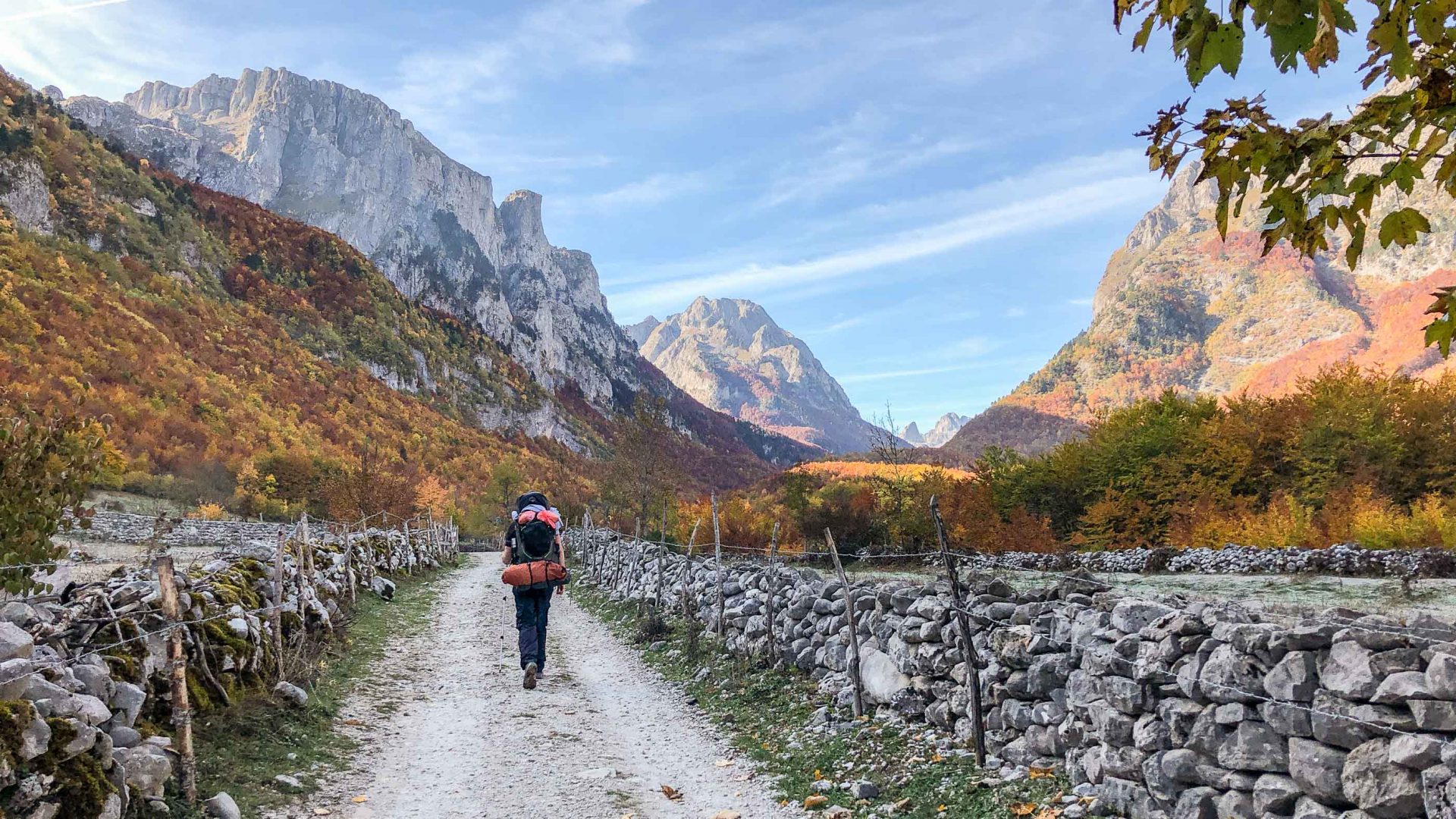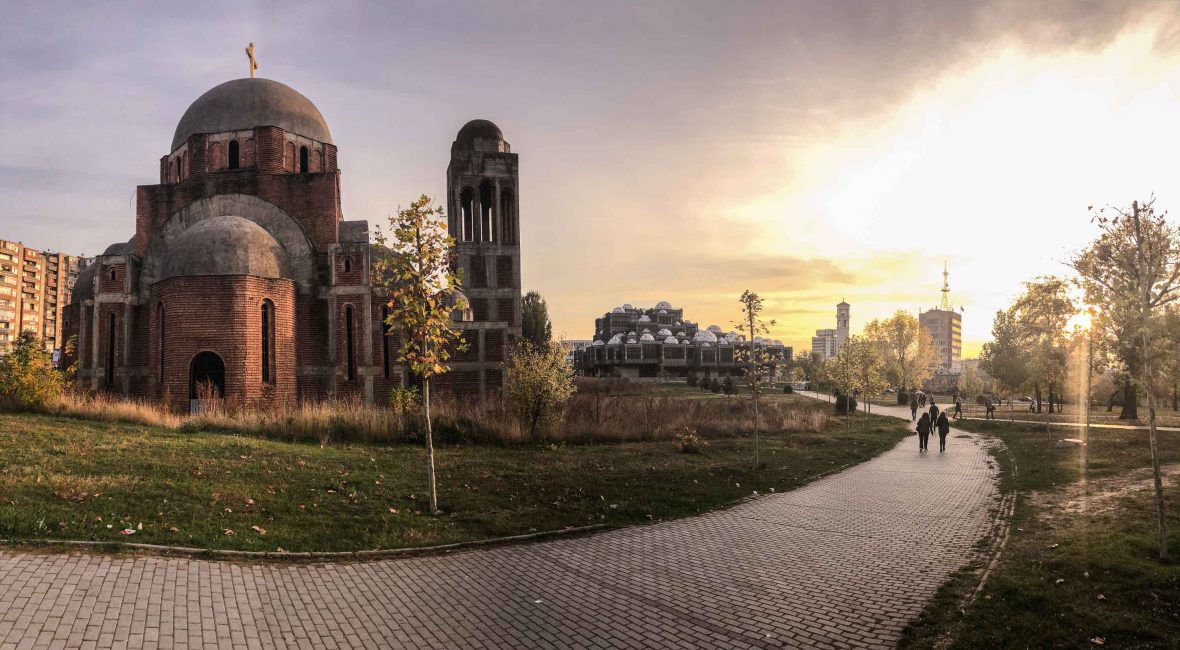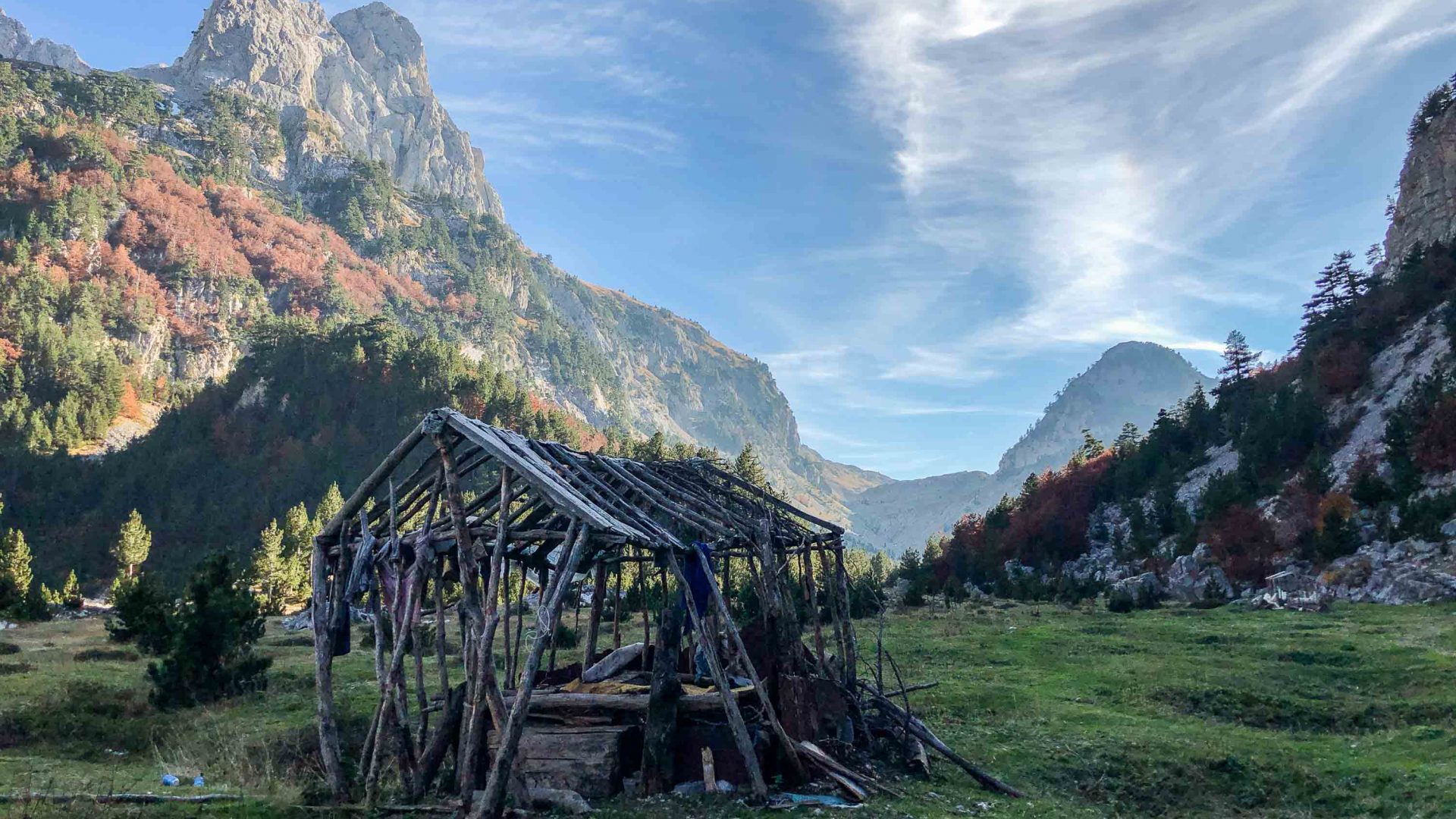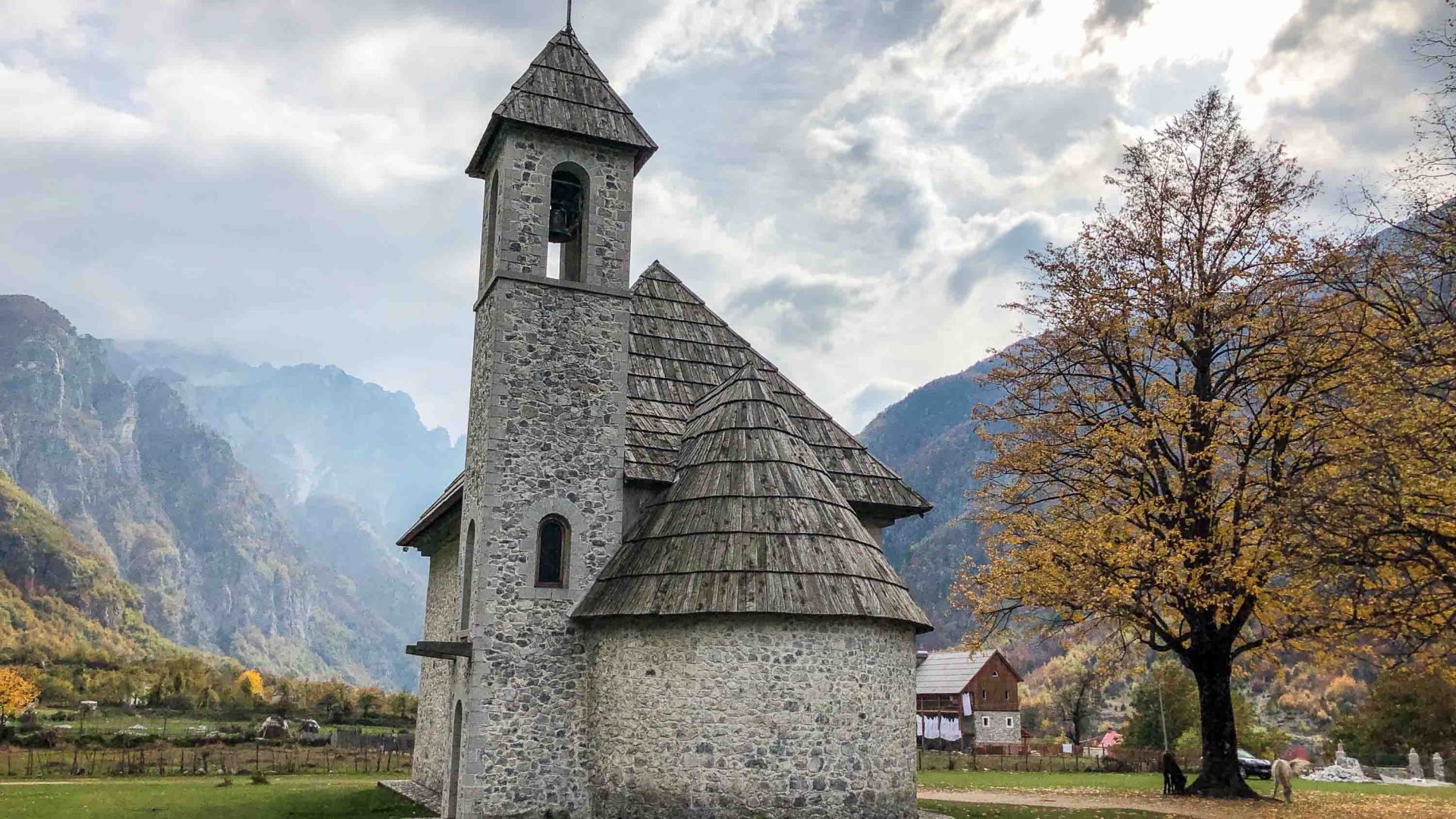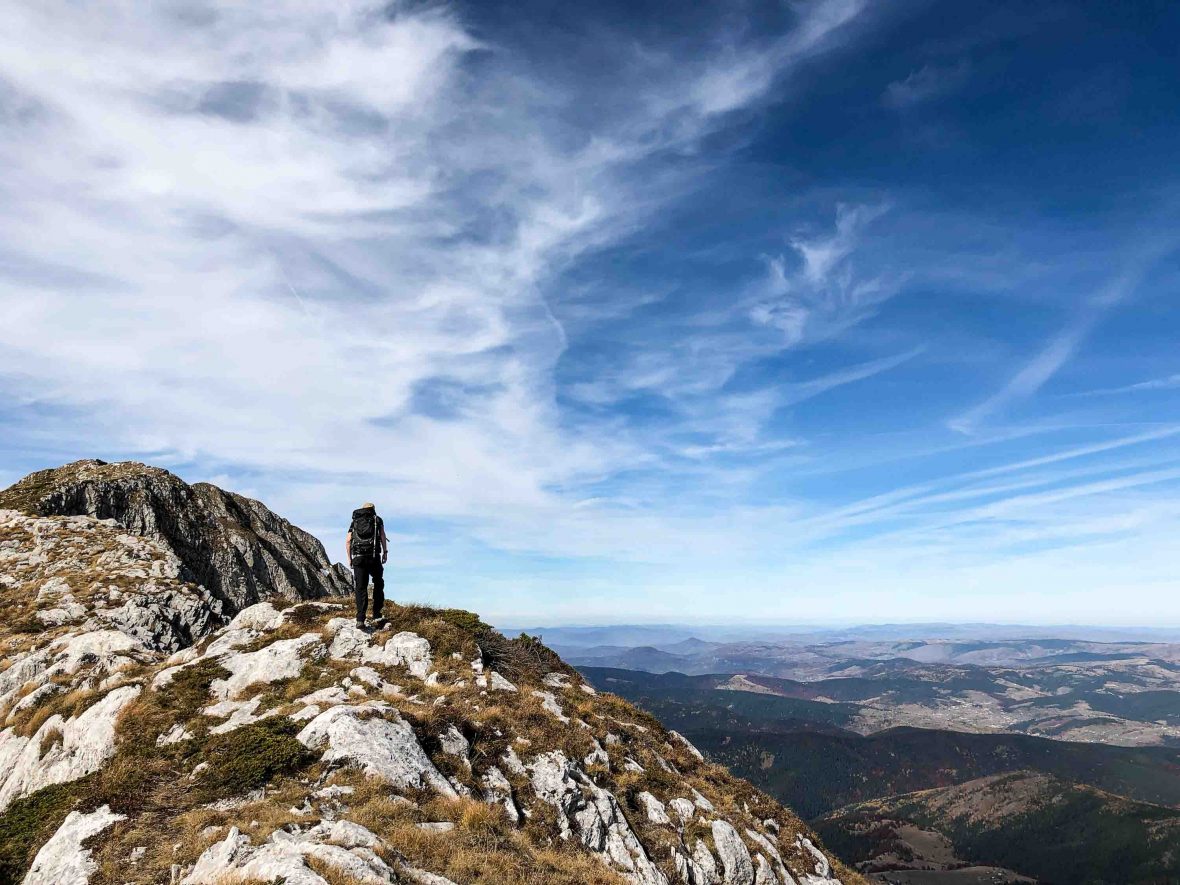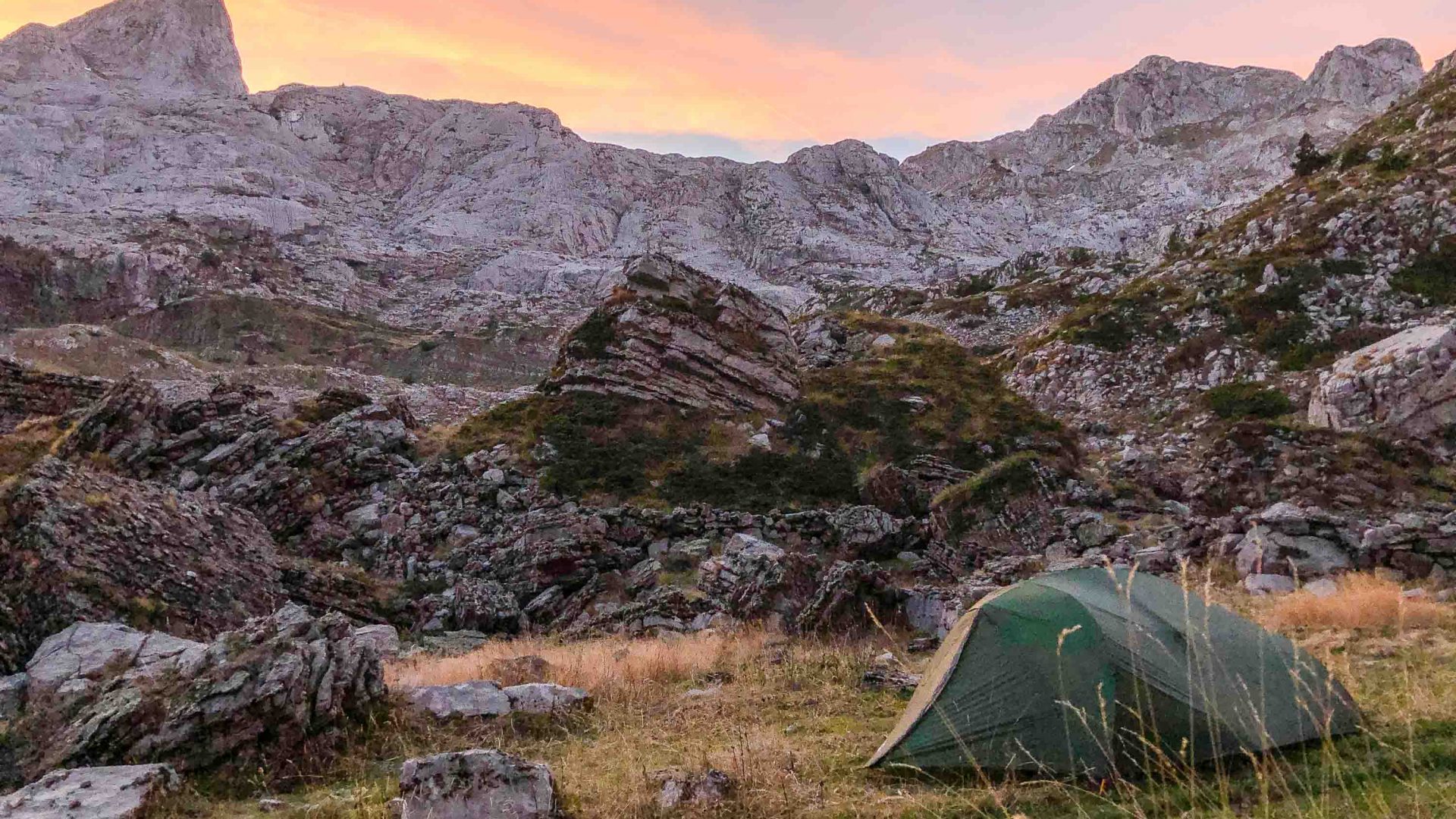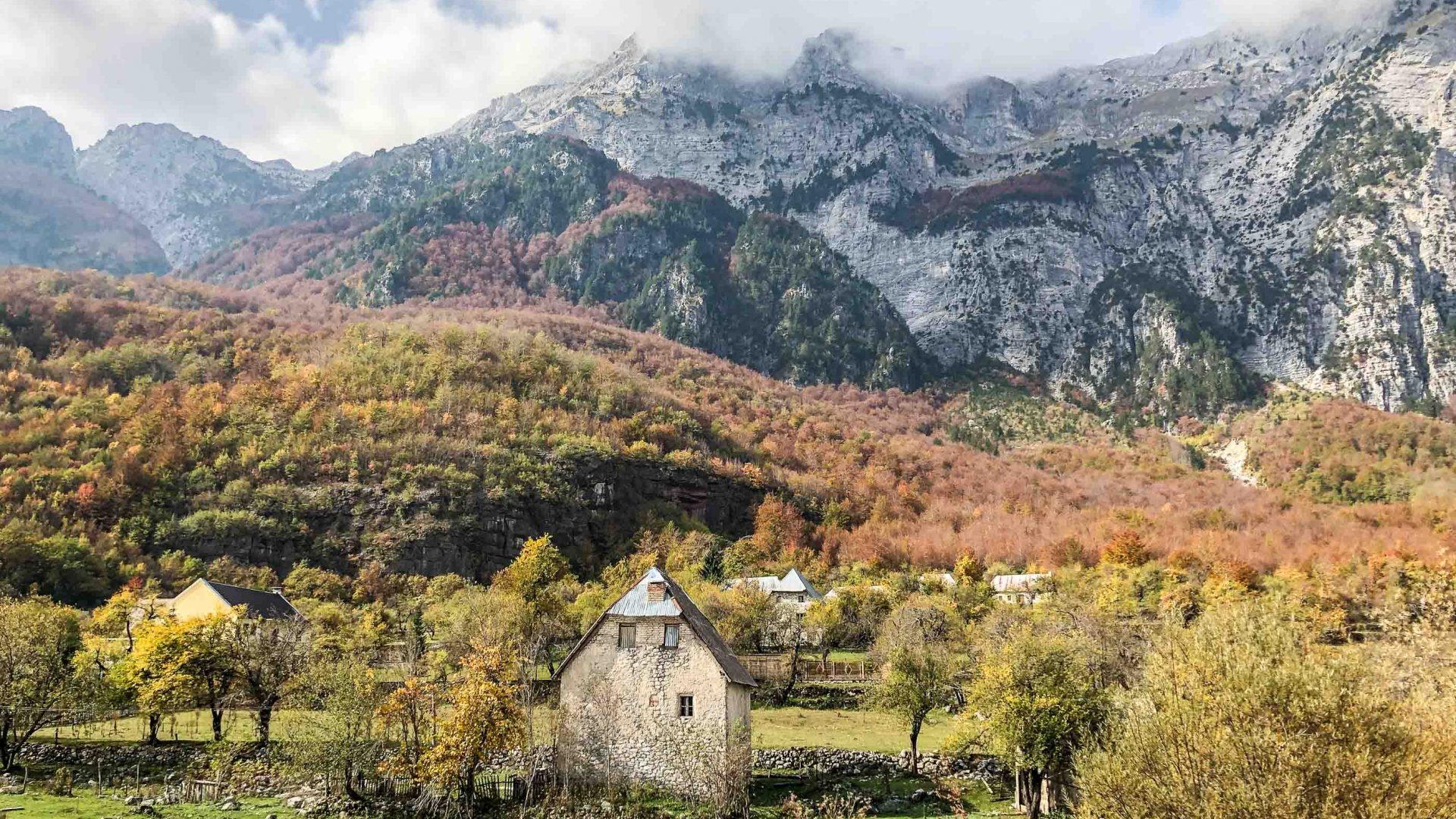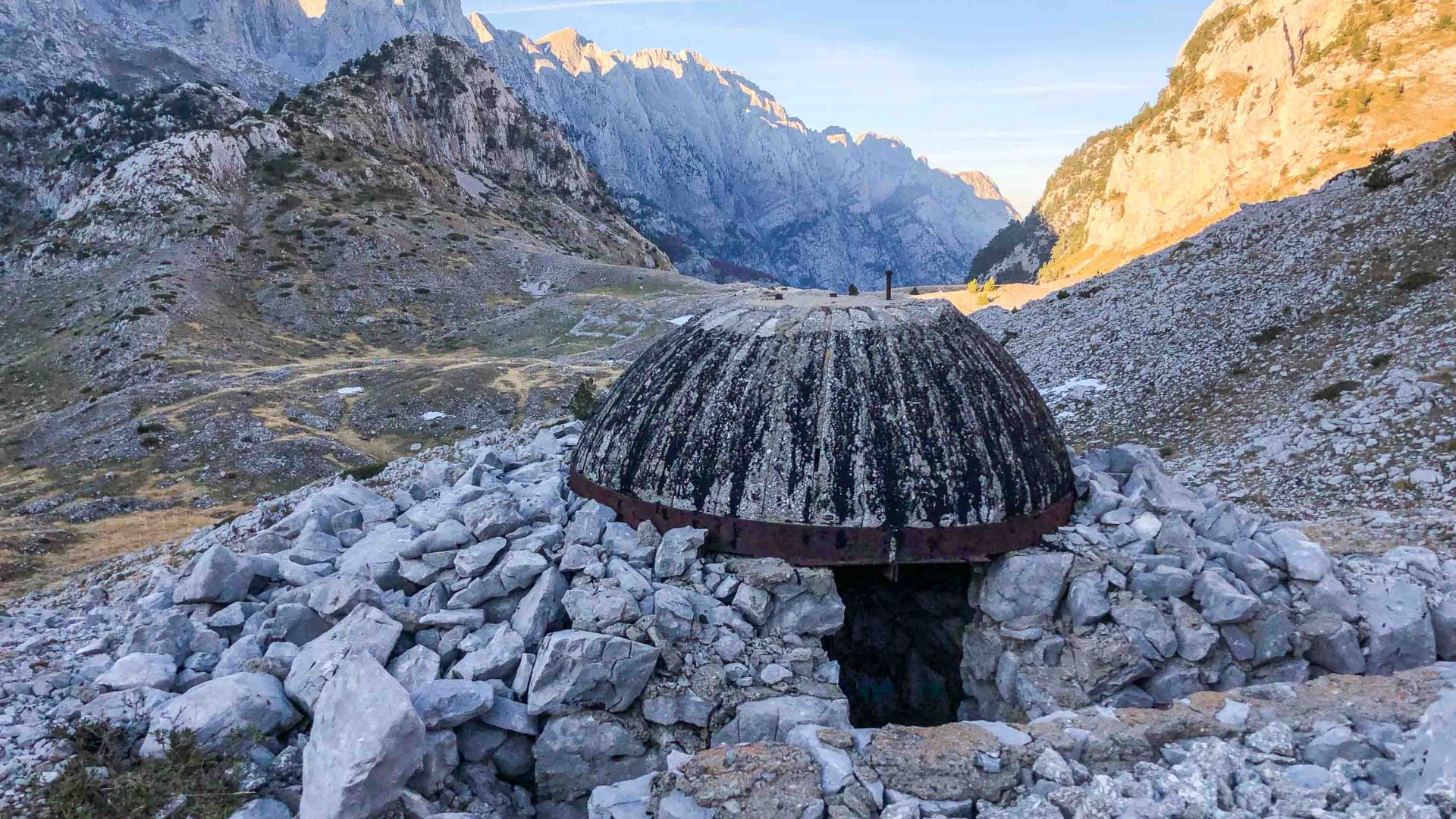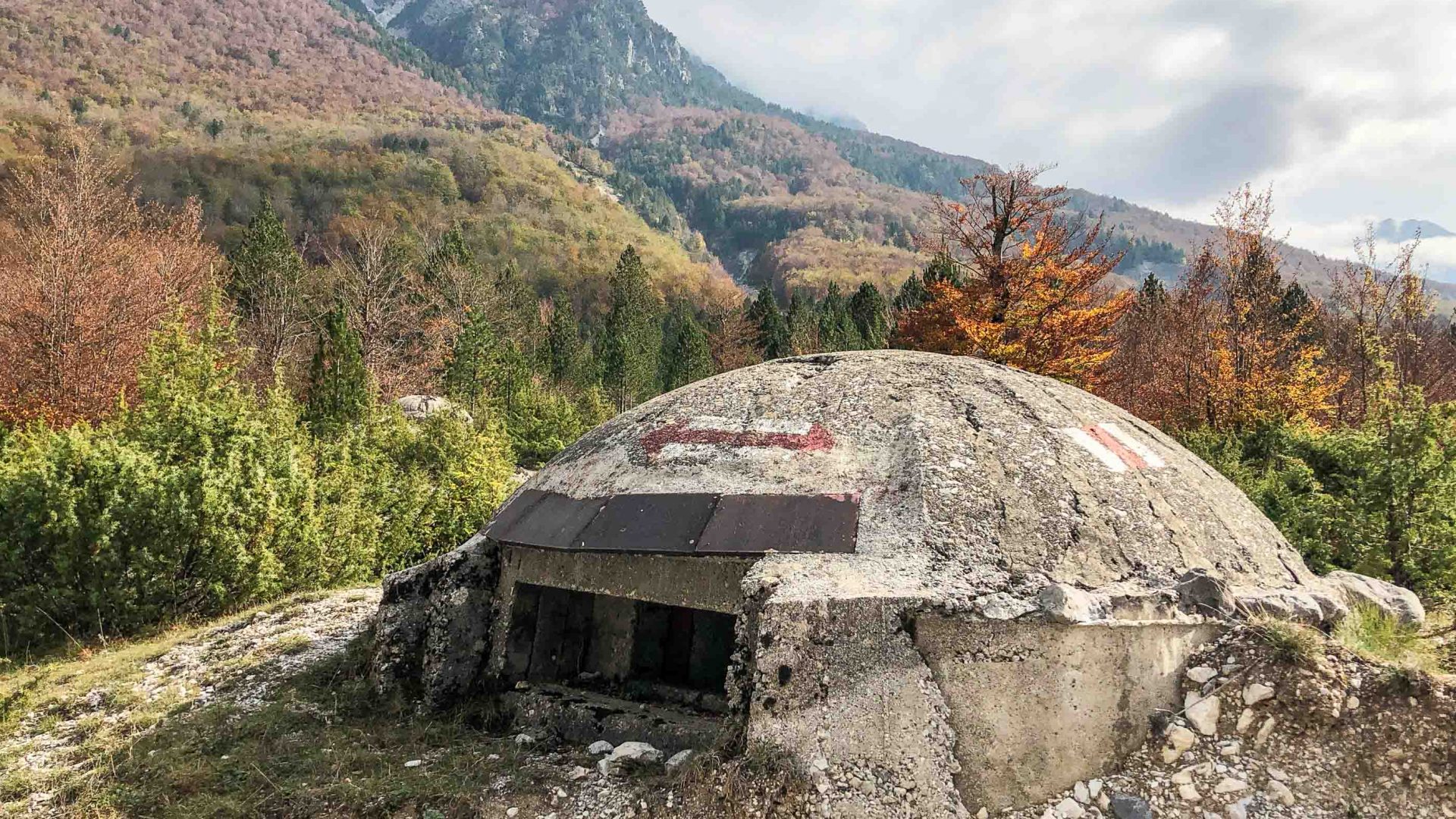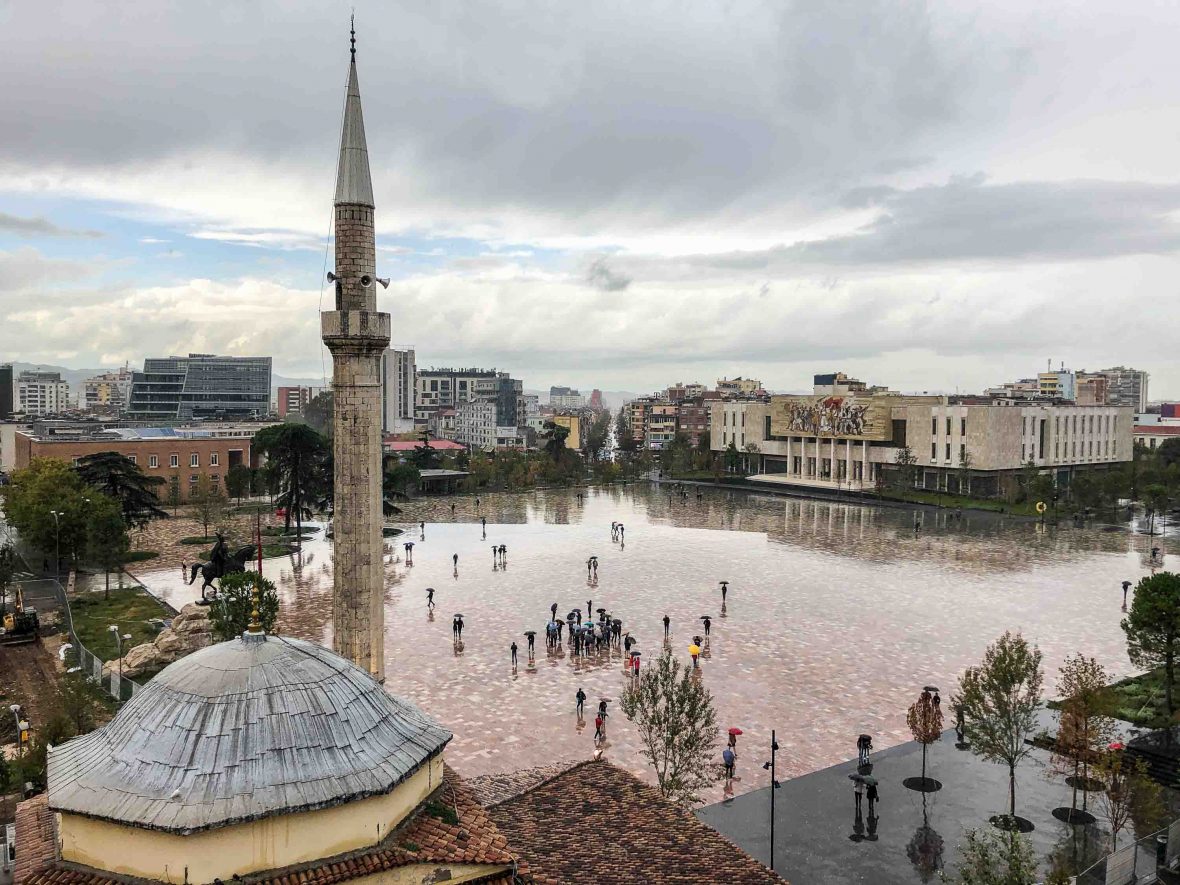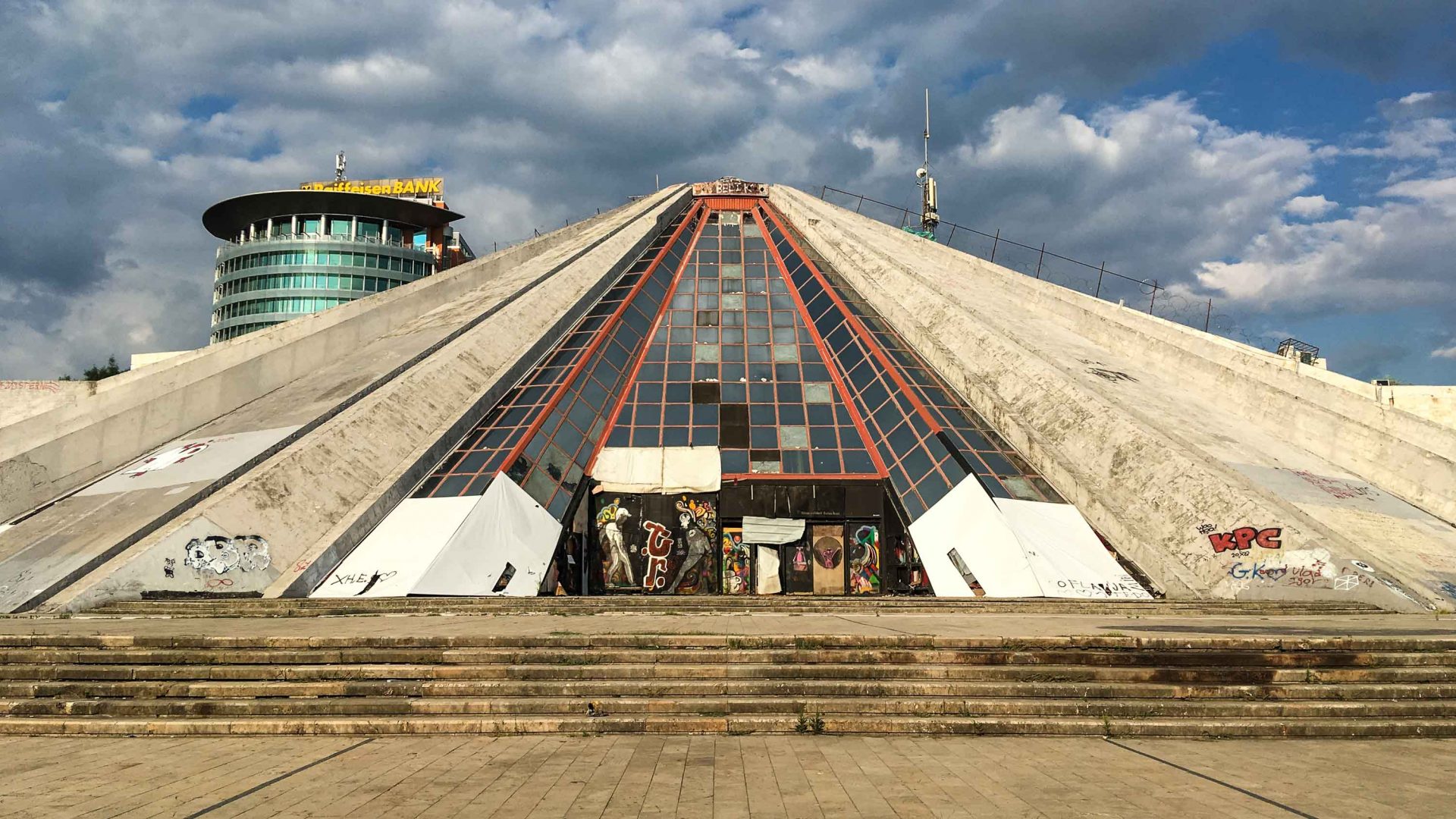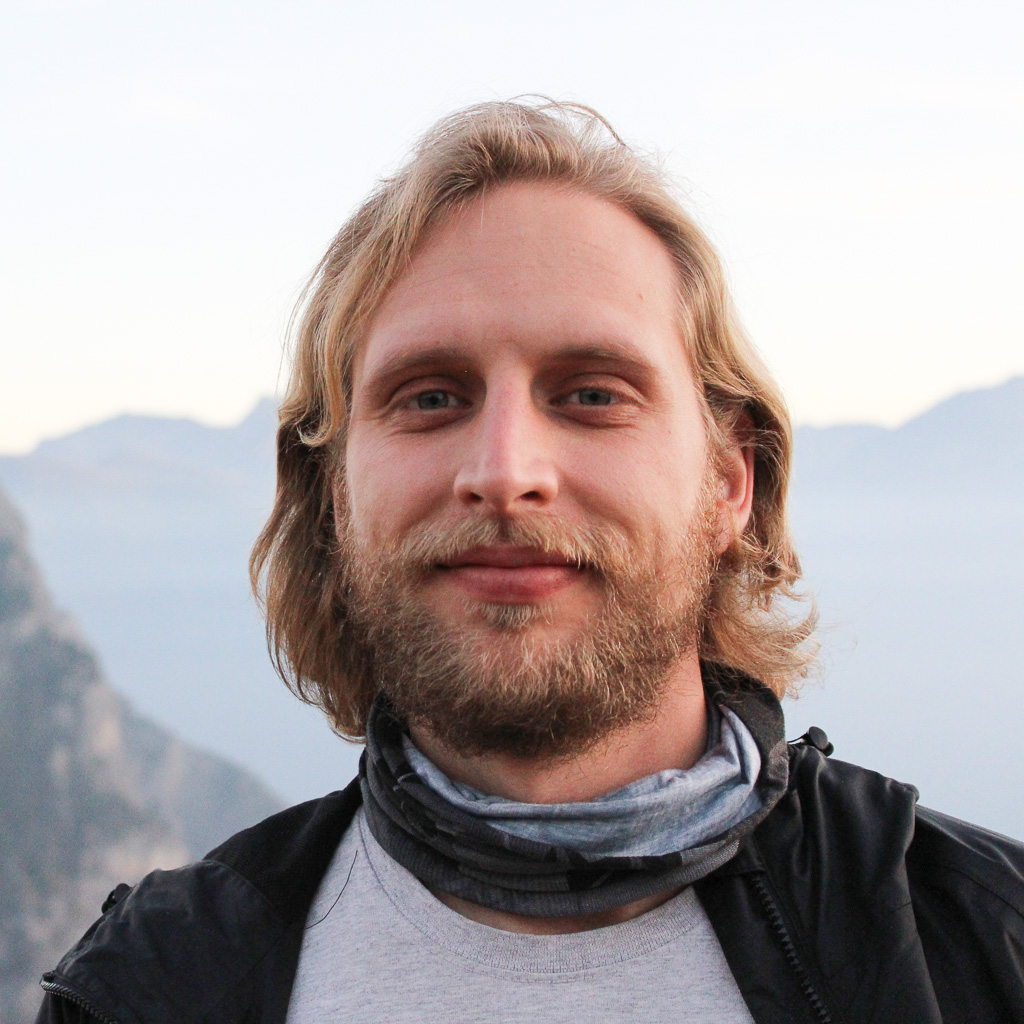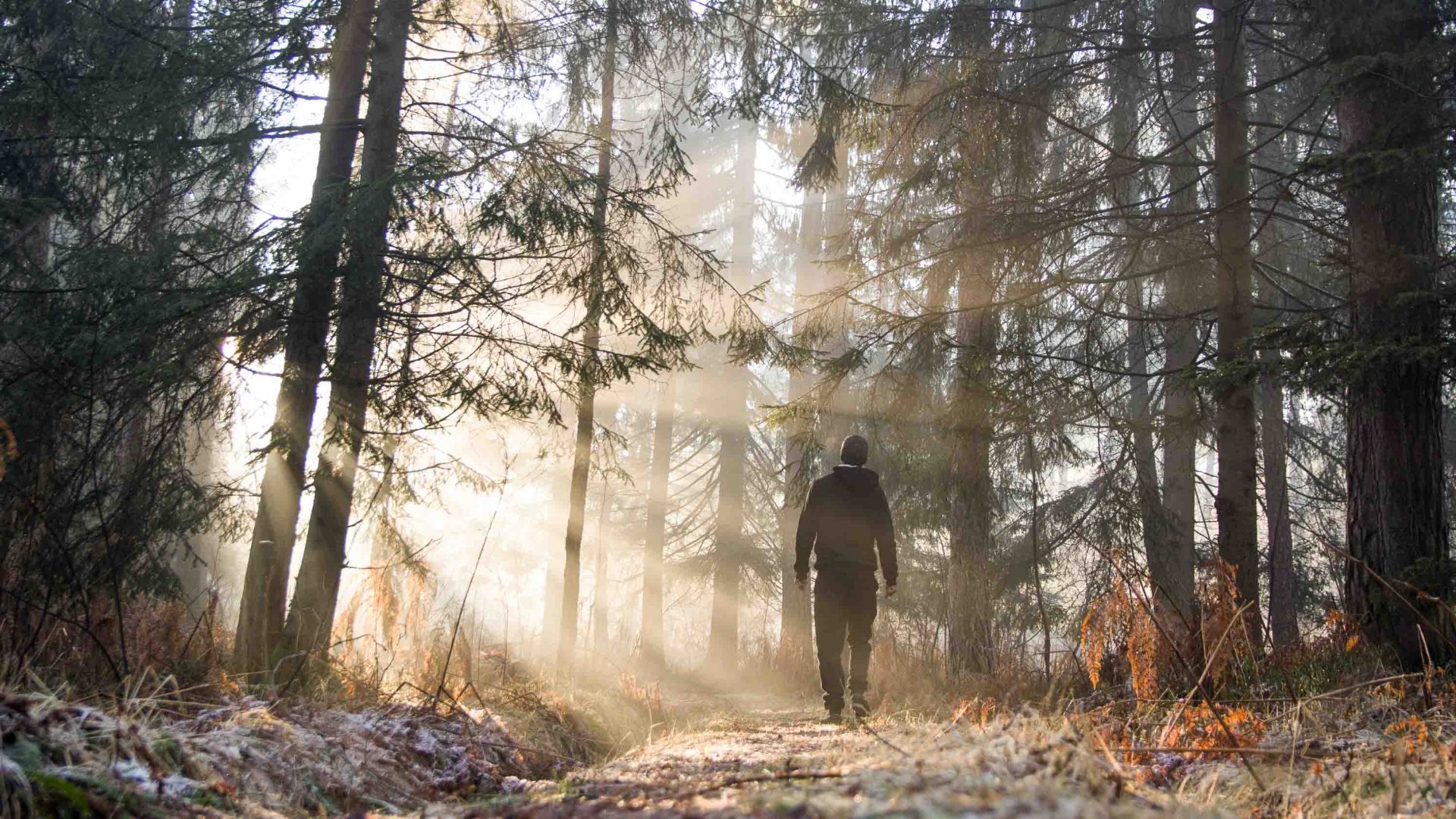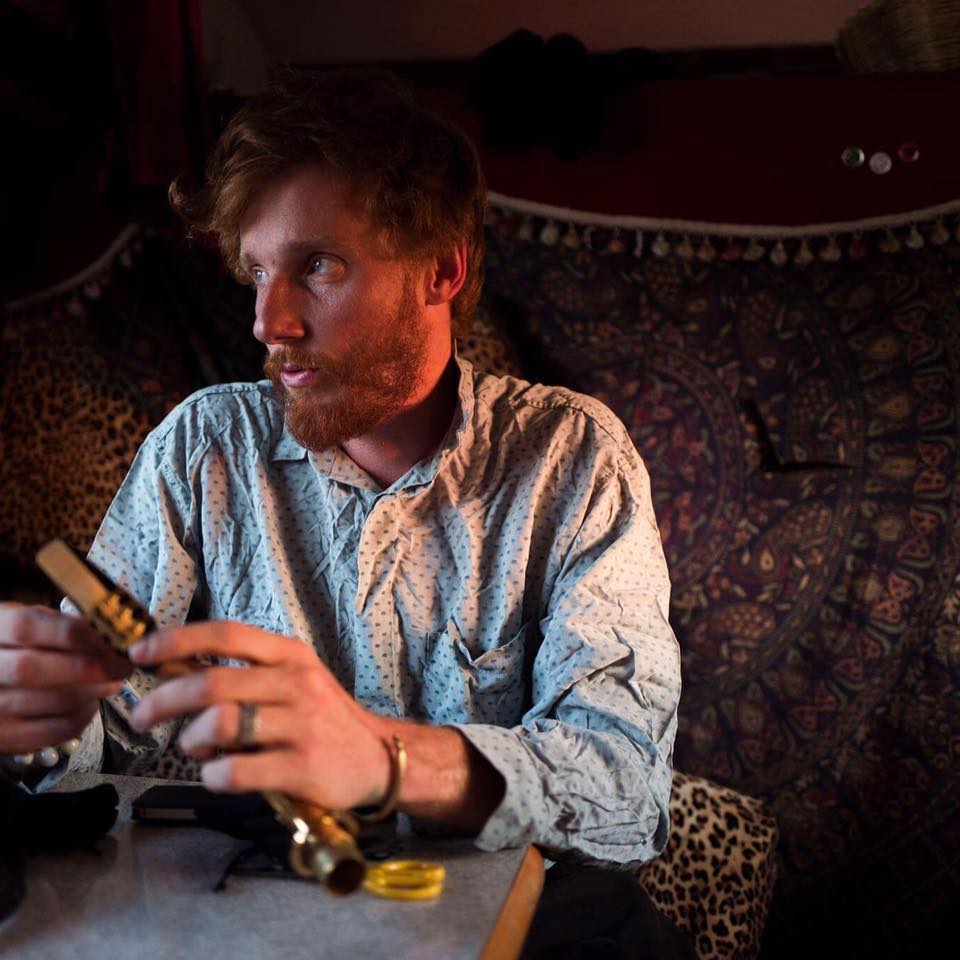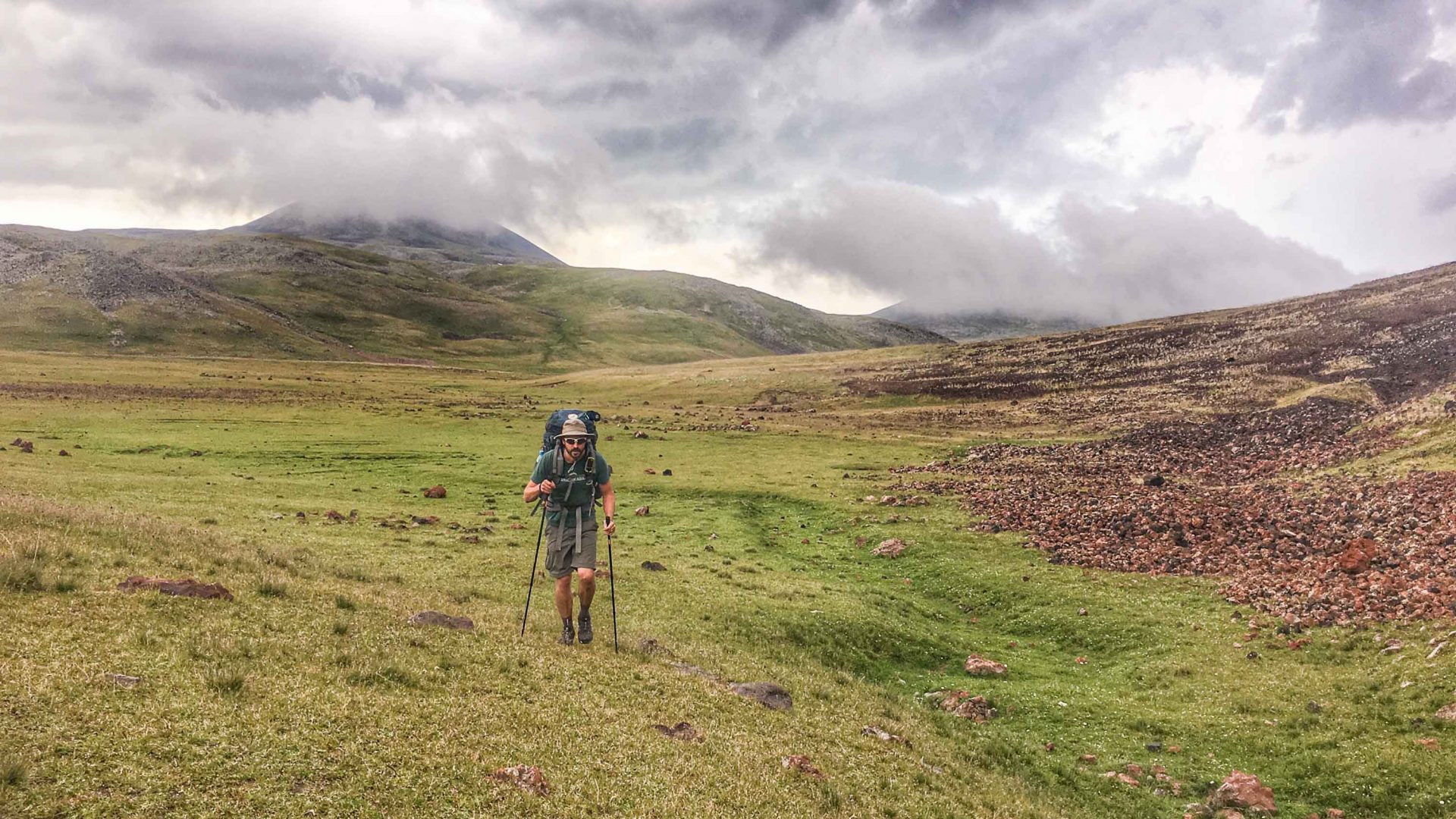As I walk below the dramatic curved walls of the glacially carved Ropojana Valley, my time in Montenegro is coming to an end. As the path climbs to the Pëjë pass, it winds around a number of mushroom-shaped concrete bunkers.
These mark the border with Albania—now, they’re all that’s left of the paranoia of former leader Enver Hoxha, who during his brutal rule, built hundreds of thousands of these bunkers across the country, at huge expense. They were designed ostensibly for times of war; to be used as defensive positions should an invasion occur. The enemy never came, but the population lived in constant fear. Still the bunkers can be seen everywhere across Albania, and the folly and hubris is even more apparent when one sees them out in the hills, alone and isolated, and surrounded not by enemies or spies but by the majesty of the mountains.
I descend down a steep track into the almost-impossibly quaint village of Theth ; a collection of traditionally-built wooden and stone homes, and dominated by the single spire of the church on the hill. All around, the mountains close in. Here, I catch a series of buses to take me up and over a pass to the outside world; namely, the Albanian city of Shkodër, and then onto the capital Tirana.
